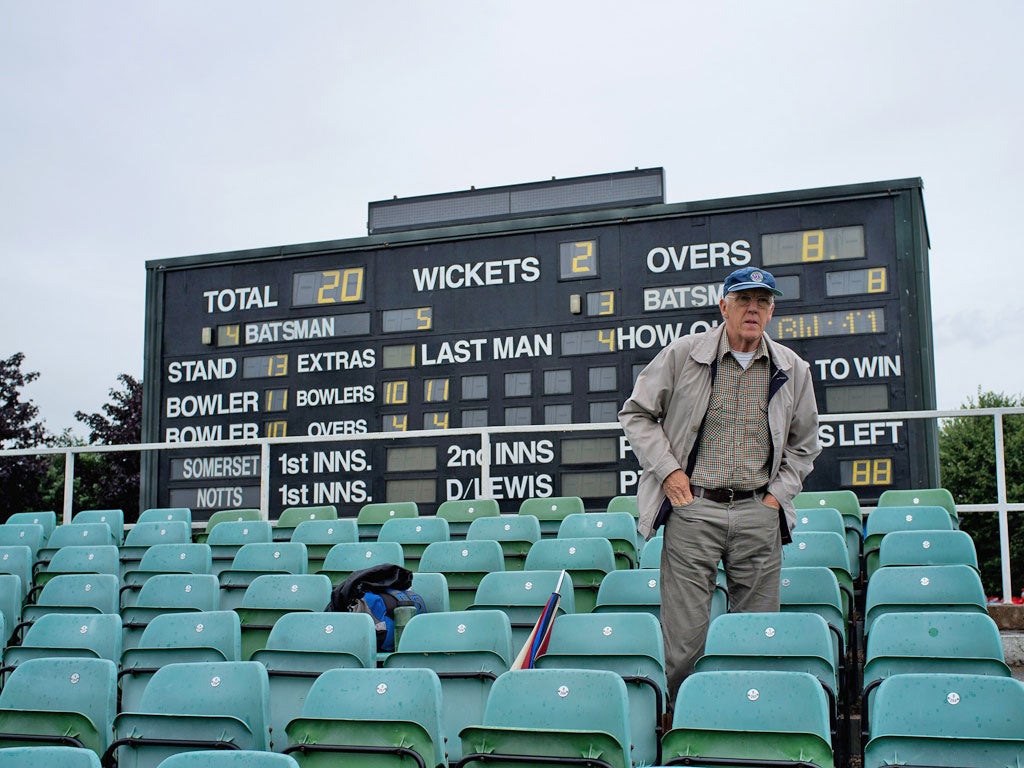Glenn Moore: County cricket can help itself by finally sorting fixture list
The Way I See It: I'm very frustrated to see so many weekends in September empty

The scene at Canterbury's St Lawrence Ground on Bank Holiday Monday evoked summers past: a large crowd seated on the grassy banks, Kent in trophy contention, the sun shining. County cricket at its best. Sadly, such scenes are becoming fewer. The decline in attendance at county cricket has many causes but sometimes the game does not help itself.
Once any aficionado knew the routine. Three-day matches were played Saturday-Monday-Tuesday, and Wednesday-Thursday-Friday. The 1954 programme ran from May to August and followed that pattern slavishly. The arrival of one-day cricket meant a longer season and interruptions for cup ties but the basic pattern remained. Four-day cricket forced a shake-up, but the format was consistent. In 1995 all Championship matches were played Thursday-Sunday except one week when matches began on a Tuesday to accommodate the NatWest final.
And so to 2012. The Championship season began on 5 April with four successive Thursday starts. It ends on 14 September after four Tuesday starts. In between, matches start every day of the week except Sunday. In the second week of August, Championship matches started on Monday (Bristol), Tuesday (Chester-le-Street and Taunton), Wednesday (Edgbaston and Canterbury) and Friday (Northampton and Hove). That week counties also fitted in CB40 matches at Edgbaston, Derby, Northampton and Cardiff.
Is it any wonder that on any given day all but the most avid followers have no idea who is playing where in what? A few years ago I had a debate with Giles Clarke, the ECB's chairman, on this subject. His argument was that football's calendar was just as complex and fans coped with that. Top-flight football has, though, followed the same basic structure for years and teams cannot be in the first day of a game in one part of the country and the third day somewhere else.
Cricket's fixture list is complex. There are various formats to be squeezed in and, as in football, television's demands must be met as well as corporate customers. But at times it seems ordinary spectators are last to be considered. Kent's CEO, Jamie Clifford, lamented the fixture list in Monday's programme. "I am a firm believer," he wrote, "that one-day domestic cricket played on Sundays and Bank Holiday Monday afternoons – when all the family can attend and watch together – remains highly popular. It is just, with the current fixture scheduling and competition structure, we don't have enough of it."
Kent this summer played at home on nine of 26 such days, three of them being the final day of a County Championship match.
Clifford went on to appeal for the return of the Sunday League, not least because it included September fixtures "which often brought the best days weather-wise", adding "I am very frustrated to see so many September weekends standing empty." Sunday 19 August was the last weekend of domestic cricket except for T20 finals day and the CB40 semis and final.
Clifford also wrote: "I believe we exist for the benefit of the cricket watcher, the supporter." This attitude should be self-evident and widespread but it is not. A survey in The Cricketer this season asked players and executives: "What should be the [county] CEO's main concern: the business, fans or players?" Most answers suggested a combination, but while some picked out the business, and others the players, none highlighted the fans first.
The game must finance itself otherwise there will be no cricket to watch, but it is in danger of pursuing cash for the sake of it. When T20 began, part of the ethos was to take the game to outgrounds which have dropped off the calendar due to the cost of maintaining facilities. But once counties realised how popular it was they moved matches to headquarters where they can pack more in – at the expense of limiting their geographical reach.
Four-day cricket and splitting the Championship has led to tougher cricket and higher standards, improving the England team whose success is crucial to the game's survival. But, it has also created a transfer market and salary inflation. This increases the financial pressures on counties already struggling to meet the expectation of modern spectators and players for better facilities.
Which is why it was not just Kent losing which separated Monday at Canterbury from summers past. There was also the sight of a Sainsbury's on the ground, with a hotel planned that will eat into the space where generations of children have played cricket around their parents' cars. "It's not ideal, but it's better than going bust," said one local. The irony is that, while in the 1950s the MCC secretary, Ronnie Aird, bemoaned the negative attitude of county captains for losing county cricket support, the modern game is usually entertaining, with more athletic fielding and attacking batting. If only people knew when it was being played.
Join our commenting forum
Join thought-provoking conversations, follow other Independent readers and see their replies
Comments
Bookmark popover
Removed from bookmarks